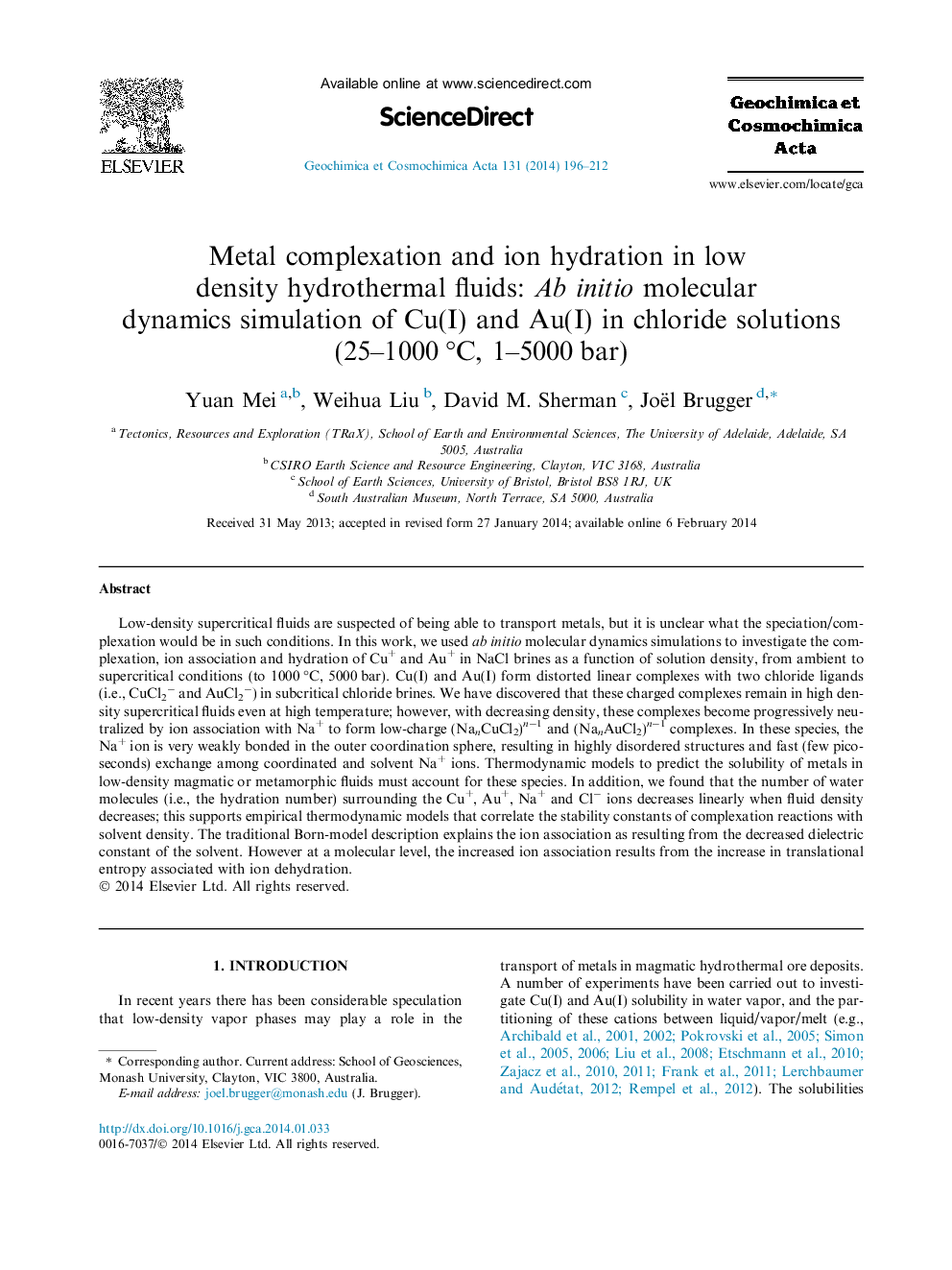| Article ID | Journal | Published Year | Pages | File Type |
|---|---|---|---|---|
| 6438633 | Geochimica et Cosmochimica Acta | 2014 | 17 Pages |
Abstract
Low-density supercritical fluids are suspected of being able to transport metals, but it is unclear what the speciation/complexation would be in such conditions. In this work, we used ab initio molecular dynamics simulations to investigate the complexation, ion association and hydration of Cu+ and Au+ in NaCl brines as a function of solution density, from ambient to supercritical conditions (to 1000 °C, 5000 bar). Cu(I) and Au(I) form distorted linear complexes with two chloride ligands (i.e., CuCl2â and AuCl2â) in subcritical chloride brines. We have discovered that these charged complexes remain in high density supercritical fluids even at high temperature; however, with decreasing density, these complexes become progressively neutralized by ion association with Na+ to form low-charge (NanCuCl2)nâ1 and (NanAuCl2)nâ1 complexes. In these species, the Na+ ion is very weakly bonded in the outer coordination sphere, resulting in highly disordered structures and fast (few picoseconds) exchange among coordinated and solvent Na+ ions. Thermodynamic models to predict the solubility of metals in low-density magmatic or metamorphic fluids must account for these species. In addition, we found that the number of water molecules (i.e., the hydration number) surrounding the Cu+, Au+, Na+ and Clâ ions decreases linearly when fluid density decreases; this supports empirical thermodynamic models that correlate the stability constants of complexation reactions with solvent density. The traditional Born-model description explains the ion association as resulting from the decreased dielectric constant of the solvent. However at a molecular level, the increased ion association results from the increase in translational entropy associated with ion dehydration.
Related Topics
Physical Sciences and Engineering
Earth and Planetary Sciences
Geochemistry and Petrology
Authors
Yuan Mei, Weihua Liu, David M. Sherman, Joël Brugger,
